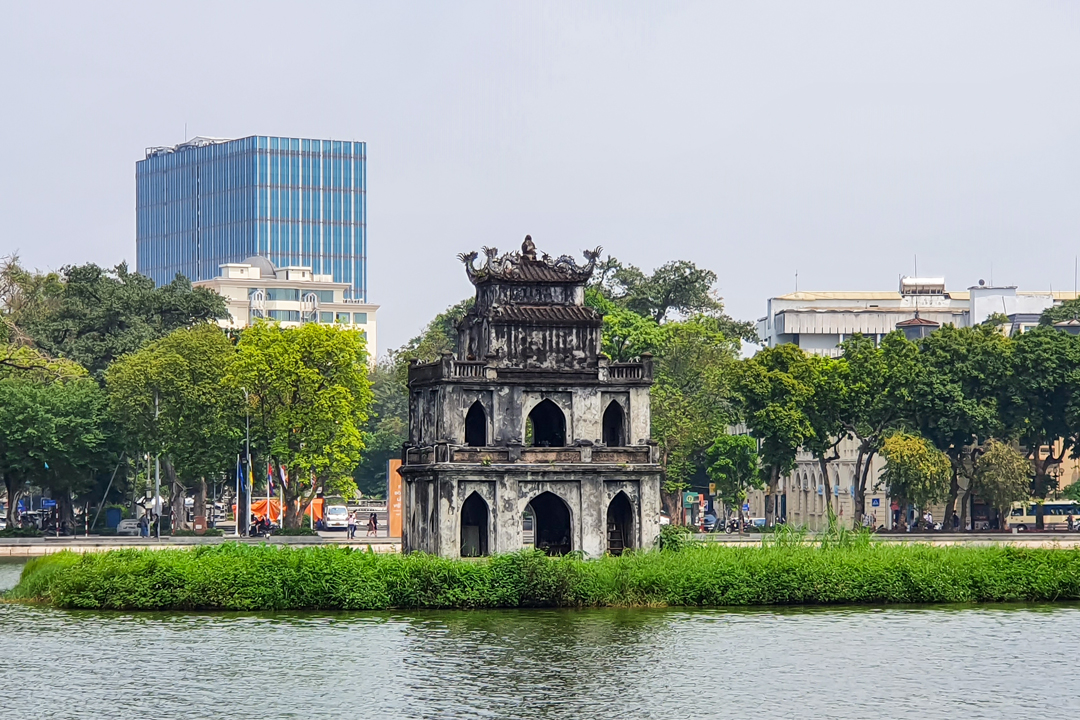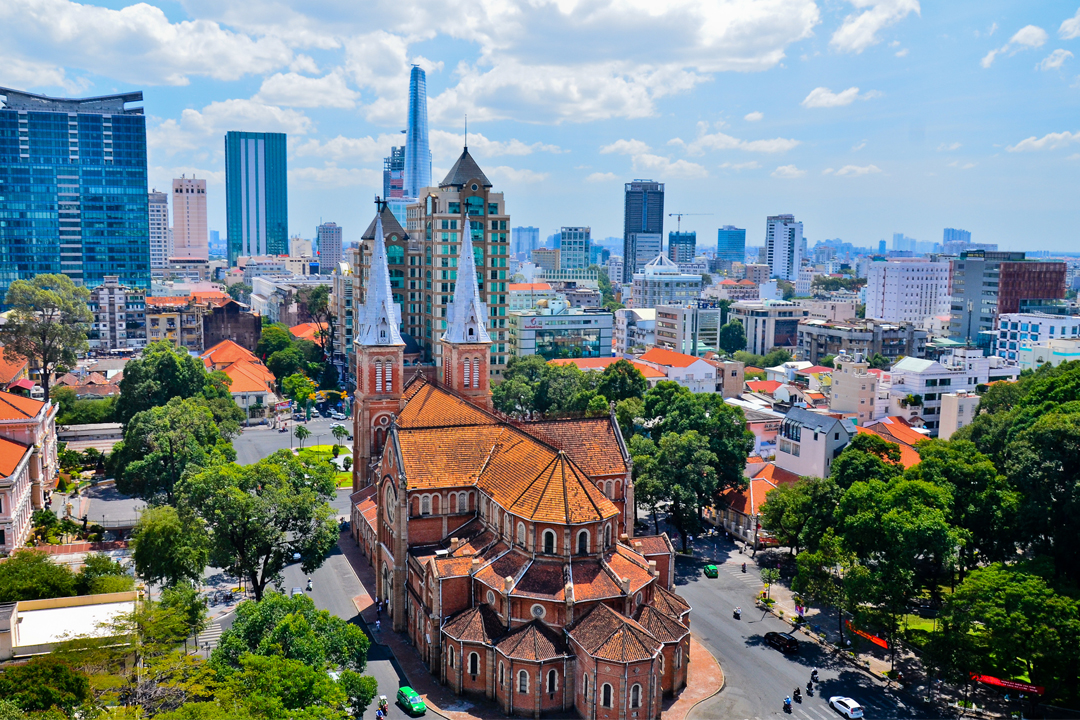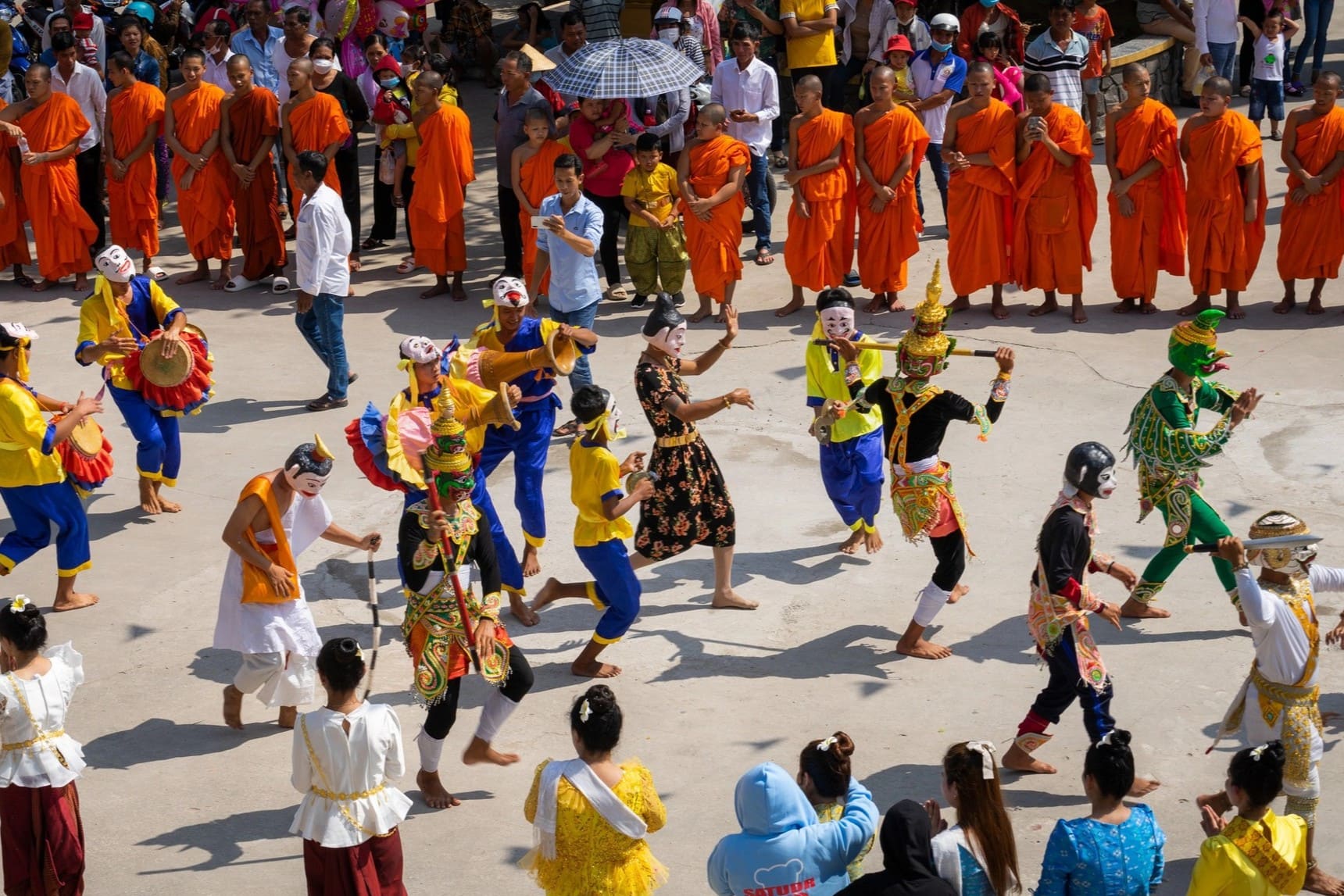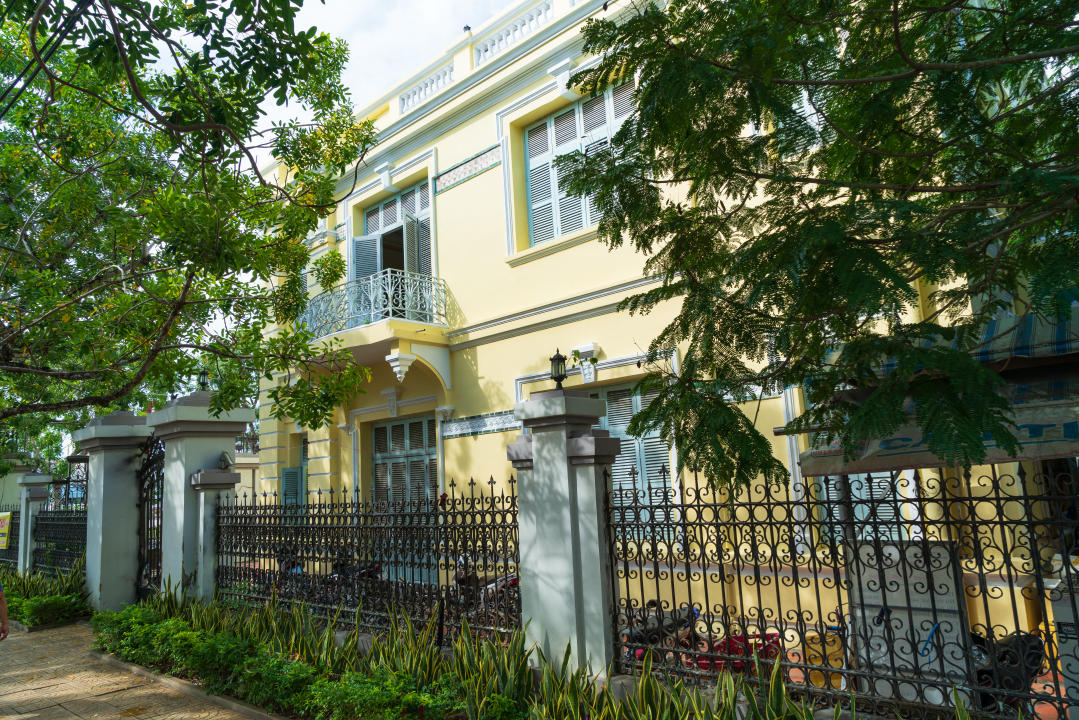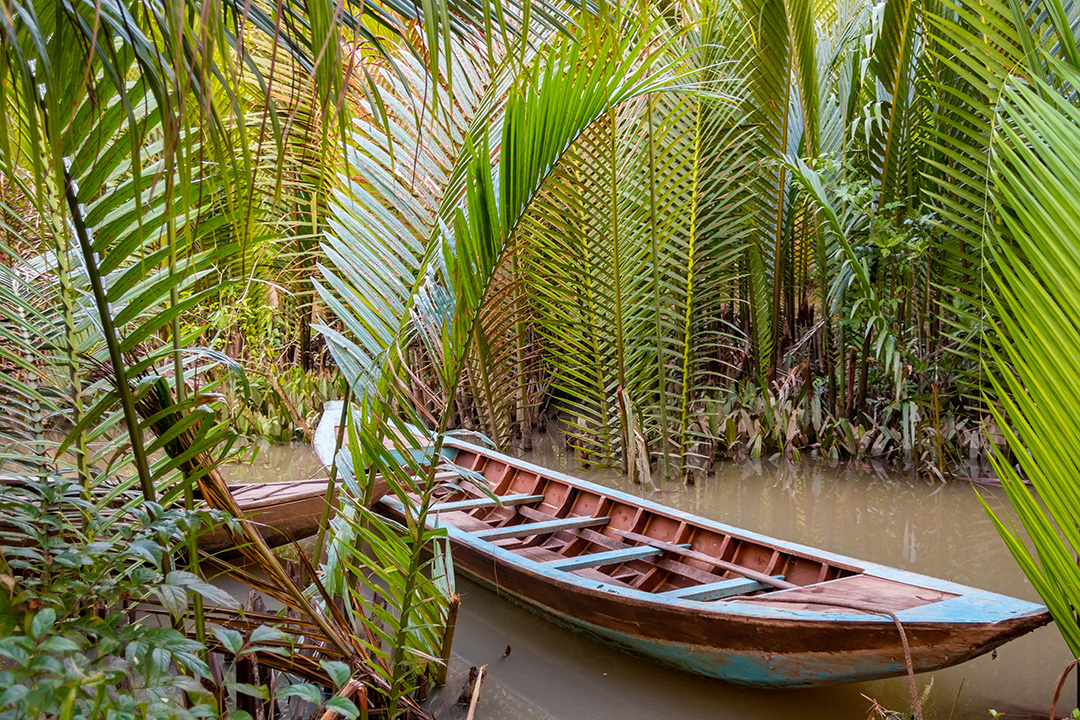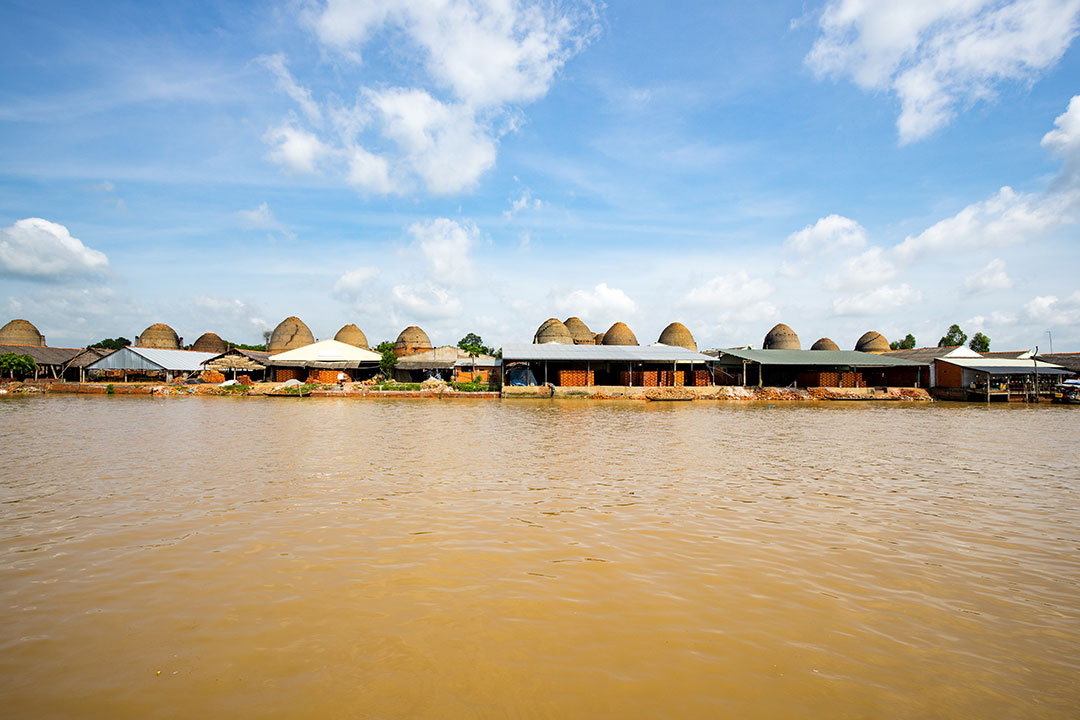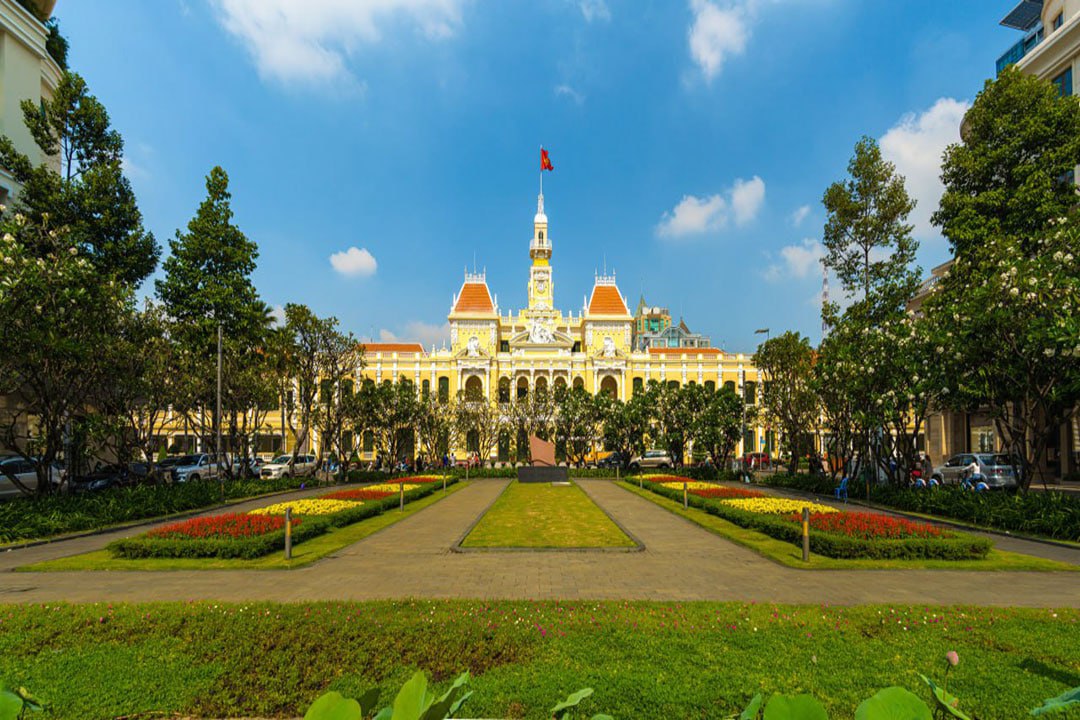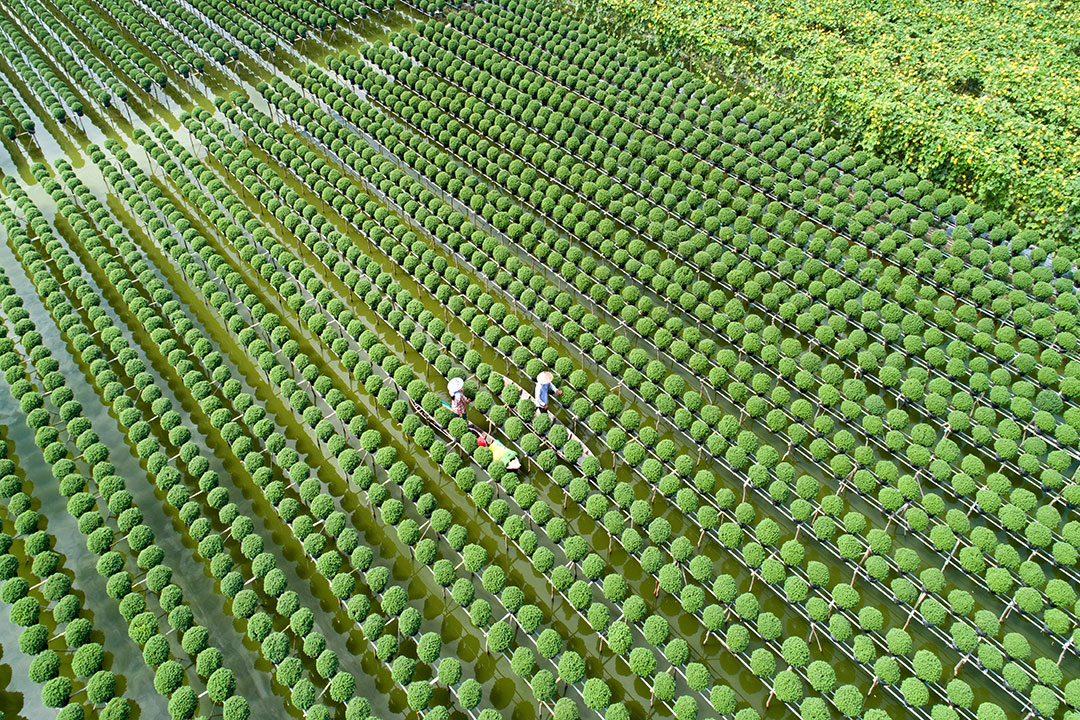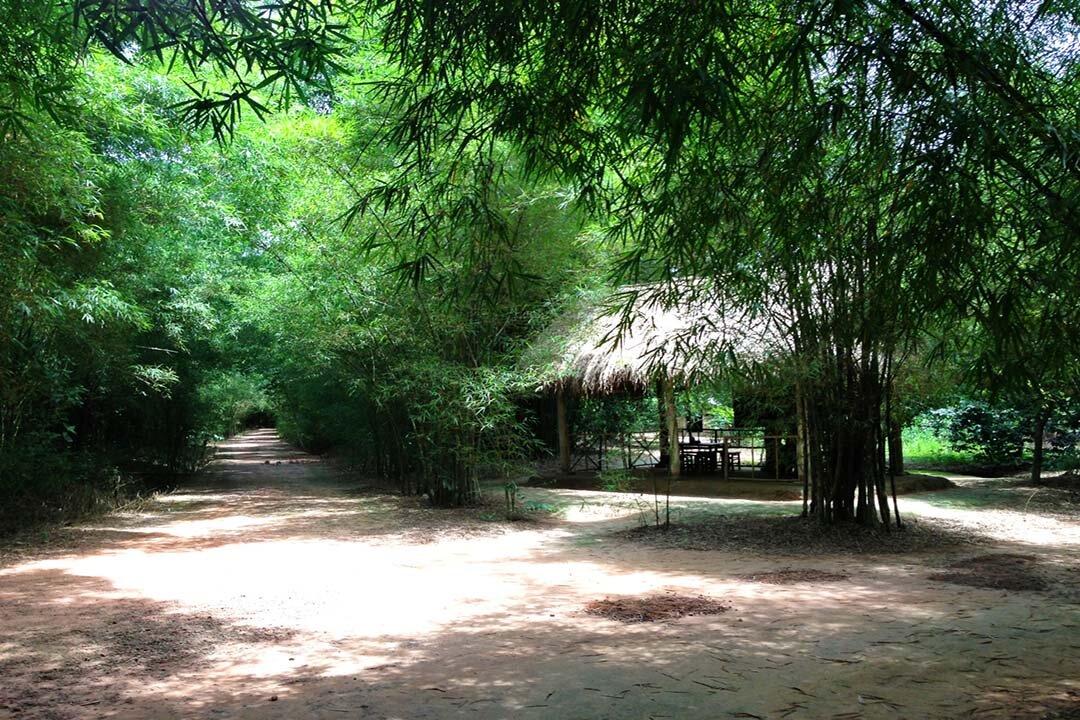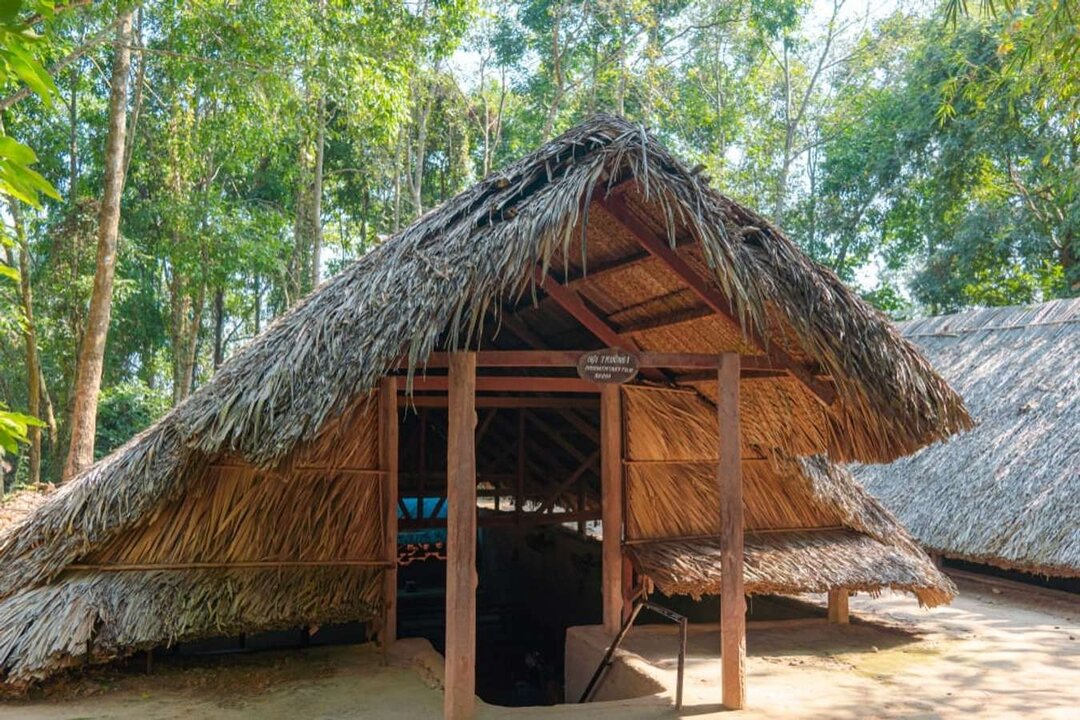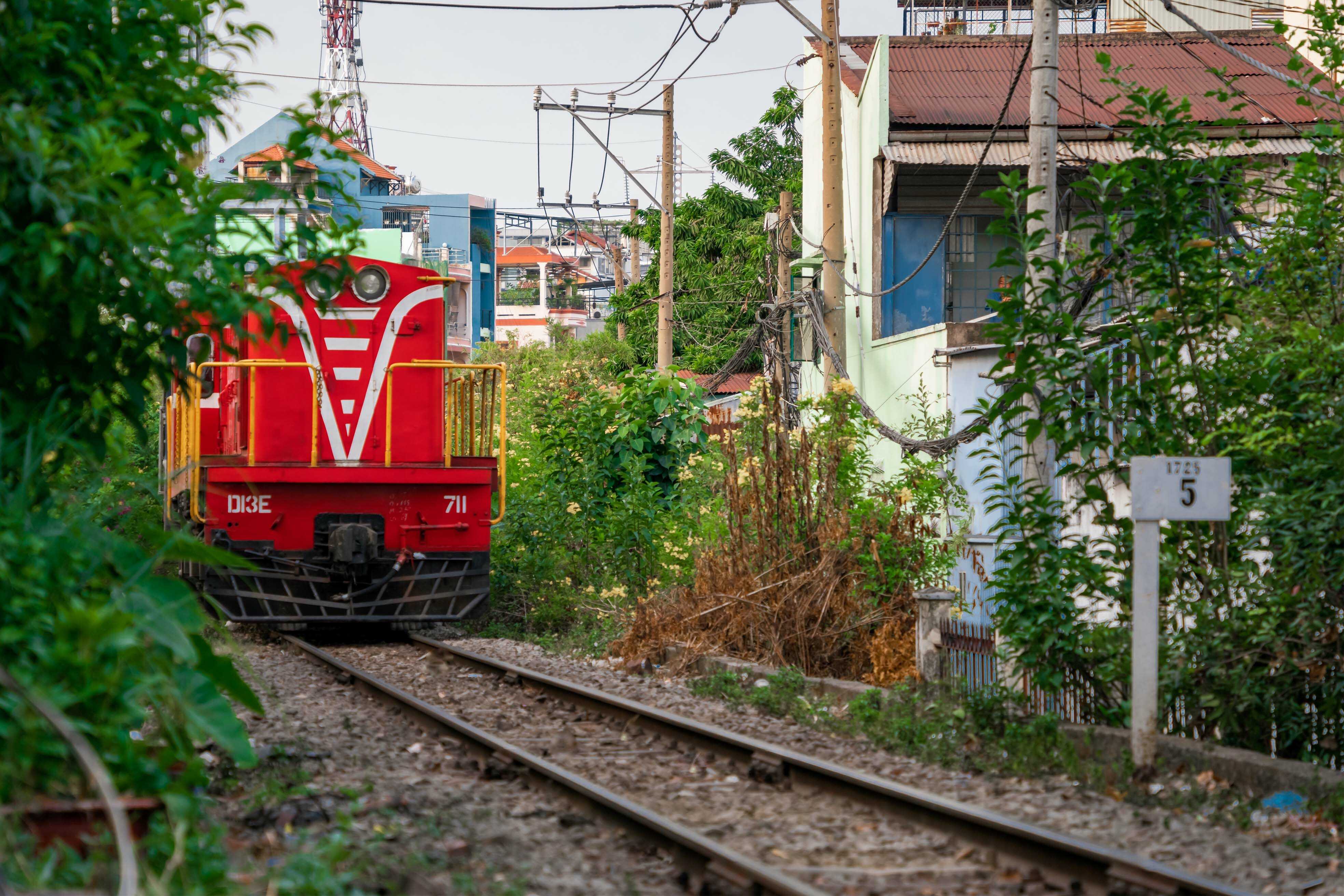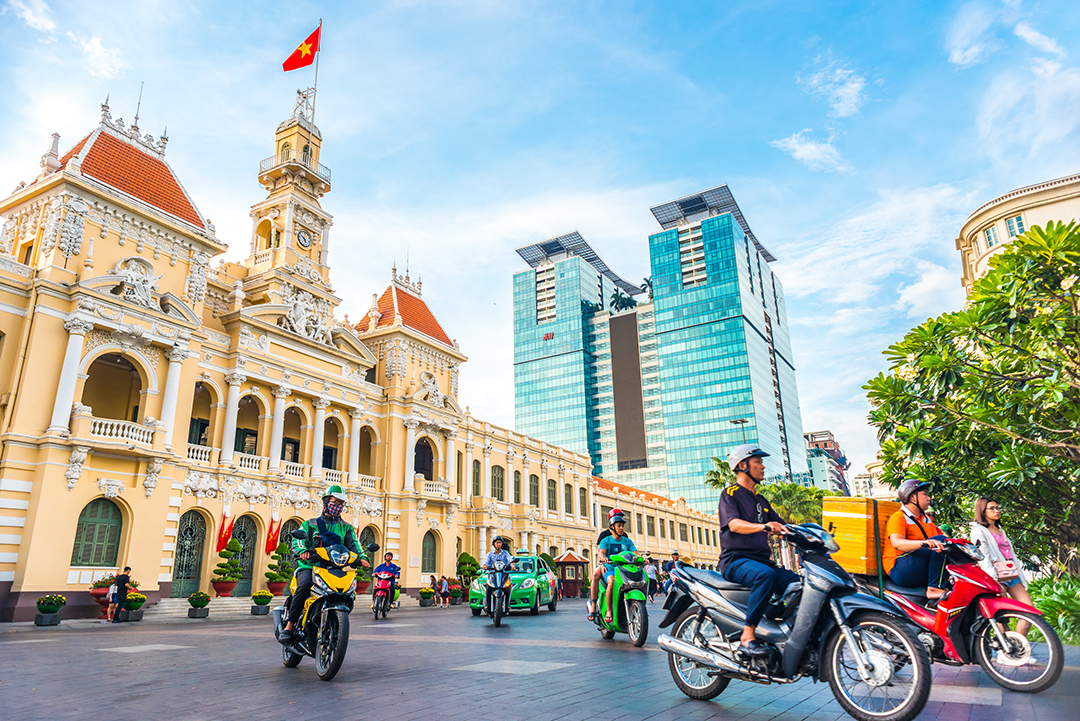Cong Tu Bac Lieu House: History, Architecture, What To See & Travel Guide
Cong Tu Bac Lieu House is one of the most famous historical landmarks in the Mekong Delta. This grand colonial-style mansion once belonged to Tran Trinh Huy, a legendary wealthy figure known as the "Prince of Bac Lieu". Built in the early 20th century, the house stands as a testament to an era of opulence and Western influence, blending French architectural elegance with Vietnamese heritage. Today, it remains a cultural attraction that offers a fascinating insight into the extravagant lifestyle of Bac Lieu’s elite class.
Located in the heart of Bac Lieu City, this well-preserved mansion is an unmissable destination for those passionate about history, architecture, and culture. Every corner of the house showcases exquisite details, its imported Italian marble floors, its antique French furniture, reflecting the wealth and social status of its original owner. Beyond its stunning design, the mansion holds intriguing stories of luxury, romance, and controversy, making it one of the most talked-about historical sites in southern Vietnam.
What makes Cong Tu Bac Lieu House even more captivating is the legend surrounding Tran Trinh Huy himself. He was notorious for his flamboyant lifestyle, high-stakes gambling, and extravagant spending, often rivaling the wealthiest elites in the region. His life was filled with tales of lavish parties, luxurious indulgences, and romantic affairs, fueling the curiosity of many who visit the mansion today. Let’s explore all about Cong Tu Bac Lieu’s House with GTrip in this article.
The legacy of Cong Tu Bac Lieu House: A symbol of wealth and heritage
Cong Tu Bac Lieu House is located at No. 13, Dien Bien Phu Street, Ward 3, Bac Lieu City, Bac Lieu Province. It stands as one of the most prominent symbols of wealth and heritage in southern Vietnam. This grand mansion reflects the opulence of its original owner, Tran Trinh Huy, and the deep cultural and historical layers of the Mekong Delta. At a time when Vietnam was under French colonial rule, the mansion was an architectural marvel, blending European luxury with local influences. Today, it serves as a bridge between past and present, allowing tourists to step into a world of extravagance and historical significance.
The mansion’s association with Tran Trinh Huy, popularly known as "Cong Tu Bac Lieu" or the "Prince of Bac Lieu", plays a crucial role in its cultural importance. Huy was renowned for his flamboyant lifestyle, spending fortunes on extravagant parties, luxury cars, and even acts of sheer indulgence, such as burning money to boil tea just to impress guests. His story became legendary, representing both admiration and caution in Vietnamese society, an icon of immense wealth but also a tale of excess and decline. The house itself, filled with imported French furniture, intricate woodwork, and lavish decorations, stands as a material testament to his status and extravagant way of life.
Beyond its historical and architectural significance, Cong Tu Bac Lieu House has transformed into one of the most visited tourist attractions in the region. After being preserved and converted into a museum, it now offers an immersive experience into the life of the southern aristocracy during the early 20th century. You can explore rooms that have been carefully maintained with original furnishings, admire the personal belongings of Tran Trinh Huy, and gain insight into the social dynamics of colonial Vietnam. This transformation from a private residence to a historical landmark has helped preserve its legacy, making it a key part of Bac Lieu’s cultural identity.

Cong Tu Bac Lieu’s House stands as one of the most prominent symbols of wealth and heritage in southern Vietnam
The mansion’s significance also extends beyond its association with wealth. It embodies the intersection of Vietnam’s past with foreign influences, particularly through its French colonial architecture. The structure was designed by a French architect and built using materials imported directly from France, including marble flooring, ironwork, and roof tiles. This architectural style, once exclusive to the elite, now serves as a historical marker of the colonial era, showcasing how Western and Vietnamese elements coexisted during the period. It offers a rare glimpse into how wealthy families of the time sought to express status and modernity through European aesthetics while maintaining their Vietnamese roots.
As a heritage site, Cong Tu Bac Lieu House continues to spark conversations about preservation and cultural memory. While it serves as a tourist attraction, it also stands as a reminder of the changing socio-economic landscape of Vietnam. The wealth that once fueled the extravagant lifestyles of figures like Tran Trinh Huy eventually faded, replaced by shifting economic structures and modern development. Yet, the mansion endures, allowing present-day tourists to reflect on a bygone era. Its transformation from a symbol of excess into a carefully preserved historical site highlights the importance of maintaining cultural heritage while adapting to contemporary tourism trends.
Ultimately, the legacy of Cong Tu Bac Lieu House is not just about luxury and grandeur but also about the evolution of Vietnamese society. It represents the aspirations, indulgences, and eventual downfall of an elite class that once dominated southern Vietnam. More importantly, it preserves an essential piece of the country’s history, ensuring that future generations can continue to learn from and appreciate the cultural richness embedded within its walls.
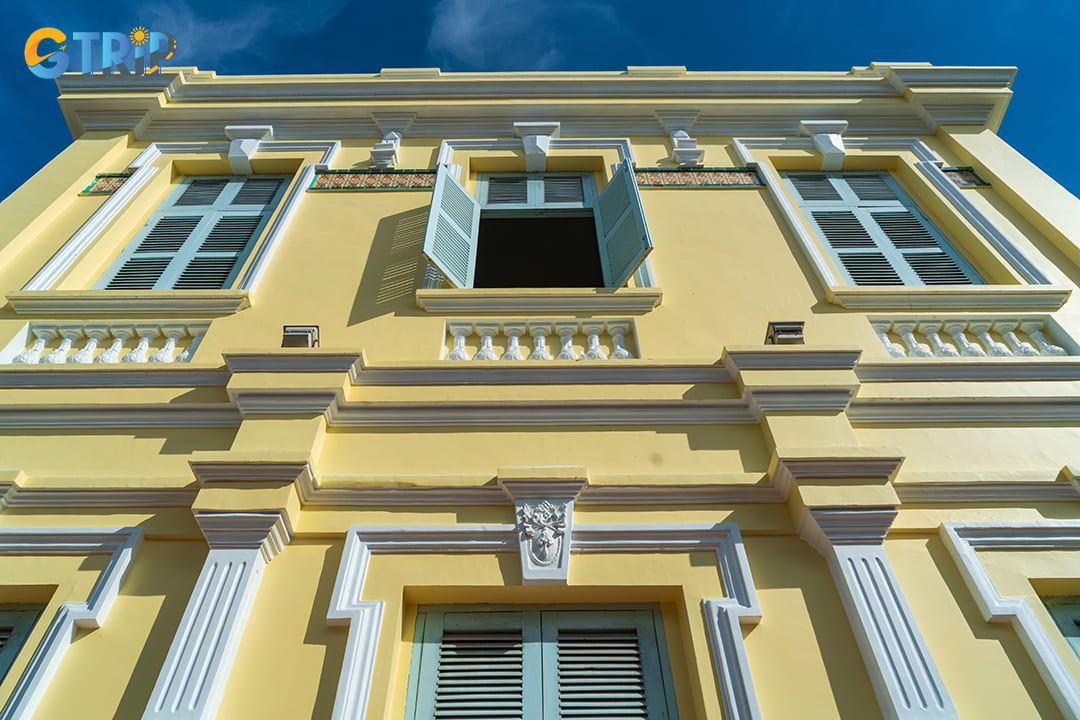
Cong Tu Bac Lieu House continues to spark conversations about preservation and cultural memory
The history of Cong Tu Bac Lieu House: From construction to present day
The Cong Tu Bac Lieu House stands as a testament to the immense wealth and influence of the Tran Trinh family in early 20th-century Bac Lieu. The construction of their opulent mansion in Bac Lieu was a reflection of their immense wealth and also a symbol of their ambition to integrate with French colonial high society.
The construction of the mansion
Built from 1917 to 1919, the Cong Tu Bac Lieu House was among the most luxurious residences of its time in Southern Vietnam. Designed by French architects, the mansion exemplified French colonial architecture, which was highly favored by the wealthy elite of the era. Unlike traditional Vietnamese homes, which often featured wooden structures, the mansion was constructed using high-quality imported materials from France, including marble flooring, iron railings, and ceramic tiles.
The construction of the mansion was a significant financial undertaking. Historical records indicate that the cost amounted to approximately 400,000 Indochinese piastres, a staggering sum at the time. This investment ensured that every detail of the house reflected European opulence, from the intricate chandeliers to the ornate ceiling moldings. The mansion featured 21 rooms, each furnished with French-imported antiques, elaborate wooden carvings, and high-end decor that set it apart from other residences in the region.
The mansion’s location in the heart of Bac Lieu was carefully chosen to reinforce the family’s status. Positioned strategically along Dien Bien Phu Street, it became a landmark that symbolized the growing urban prosperity of the province. Its towering facade, elegant balconies, and spacious courtyards made it one of the most admired architectural marvels in southern Vietnam.
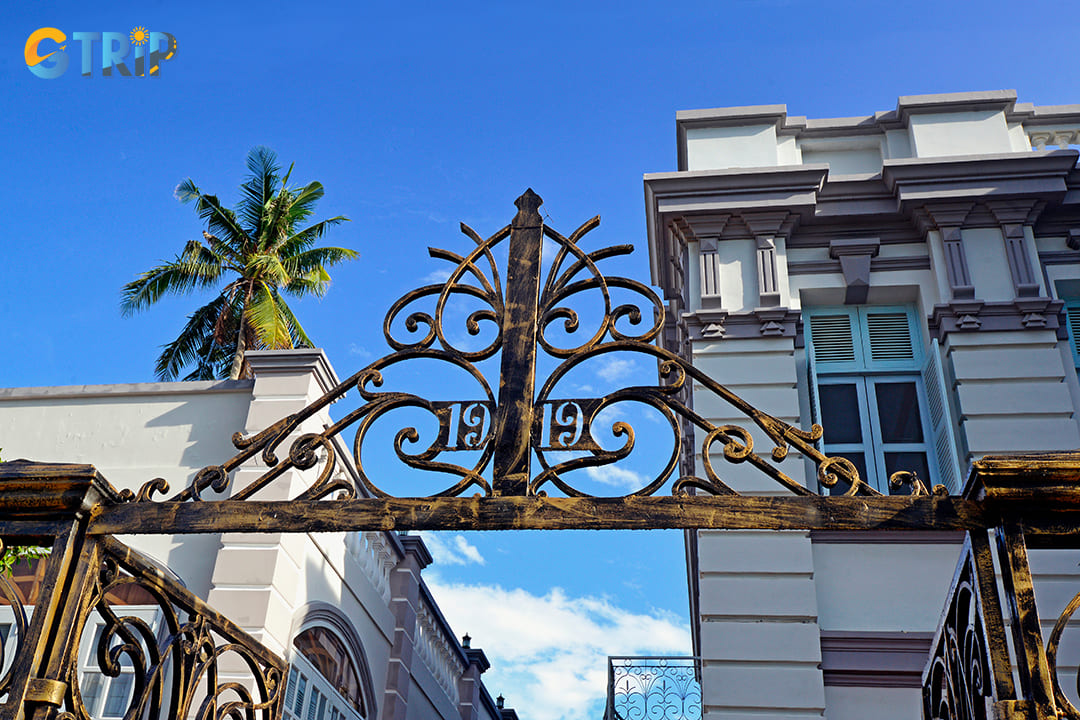
Cong Tu Bac Lieu House was among the most luxurious residences of its time in southern Vietnam
Transformation over the decades
Following the decline of French colonial rule and the political shifts in Vietnam, the mansion’s role evolved over time. After Tran Trinh Huy’s financial decline in the mid-20th century, the house eventually passed into the hands of local authorities. Instead of remaining a private residence, it was repurposed into a historical museum, preserving the legacy of Bac Lieu’s most infamous aristocrat.
Today, the Cong Tu Bac Lieu House serves as both a tourist attraction and a cultural heritage site, drawing tourists from across Vietnam and beyond. The museum showcases original furniture, personal belongings of Tran Trinh Huy, and historical artifacts, offering a glimpse into the extravagant lifestyle of the early 20th-century elite. The house has been carefully preserved, with periodic renovations ensuring that its original architectural integrity remains intact.
Guests can explore the grand dining halls, luxurious bedrooms, and elegant corridors, all meticulously maintained to reflect their former glory. Guided tours provide insight into the history of the Tran Trinh family, their lavish lifestyle, and the broader socio-economic context of colonial Vietnam. Its preservation honors the opulence of a bygone era and also serves as a reminder of the profound cultural and architectural influences that shaped modern Vietnam.
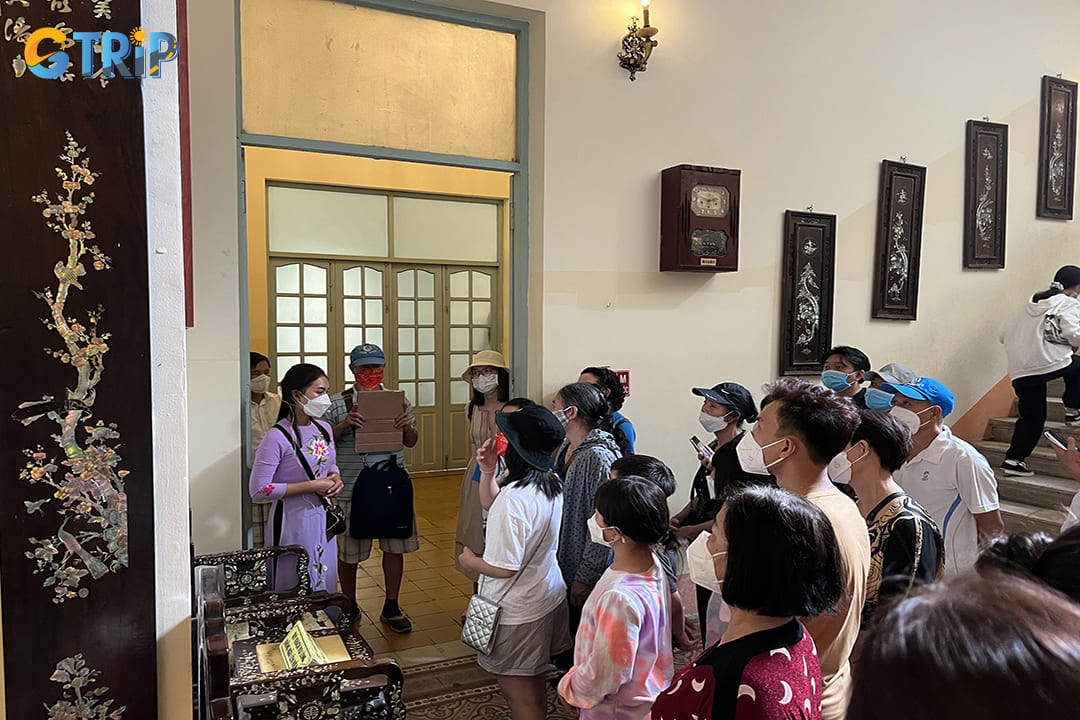
The Cong Tu Bac Lieu House serves as both a tourist attraction and a cultural heritage site
French colonial architecture of Cong Tu Bac Lieu’s House
The House of the Prince of Bac Lieu is a prime example of French colonial architecture, a style that dominated Vietnam’s urban landscape in the late 19th and early 20th centuries. The mansion exudes the elegance, grandeur, and meticulousness characteristic of the colonial period. Unlike traditional Vietnamese houses, which emphasize wooden structures and intricate carvings, the house features solid masonry, high ceilings, and symmetrical facades - signs of French architectural influence. Every aspect of its design reflects the luxury and sophistication that shaped the life of Tran Trinh Huy, the infamous “Prince of Bac Lieu”.
The core of the architectural excellence of the mansion is the structural layout, carefully crafted to balance aesthetics and functionality. The house boasts large corridors that enhance ventilation, an important adaptation to Vietnam's tropical climate. These corridors connect spacious rooms, each decorated with imported Italian marble floors and French ceramic tiles, ensuring durability and luxury.
The ground floor of the mansion has a living room, and 2 bedrooms with two spacious halls connected by a grand staircase leading to the upper floor. The upper floor has a similar structure with 2 bedrooms and 2 halls. The staircase to the second floor is made of marble divided into 3 sections, each section has 9 steps representing longevity and eternity. In addition, the staircase to the top floor was once where Mr. Tran Trinh Trach, the father of the son of Bac Lieu, used to dry money. The mansion features large and small windows with ornate wooden shutters that allow natural light to flood in while maintaining a cool atmosphere. This technique was borrowed from European designs and adapted to suit Southeast Asian weather conditions.
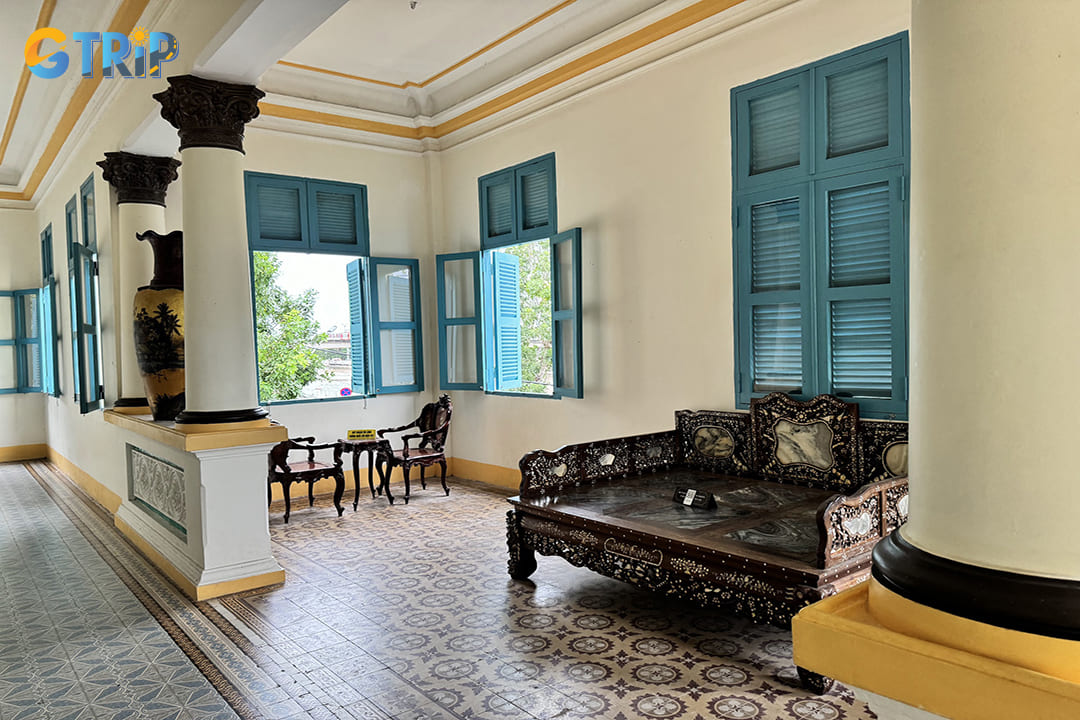
The House of the Prince of Bac Lieu is a prime example of French colonial architecture
Inside, the mansion’s lavish interior design further emphasizes its French colonial identity. The living and dining areas feature hand-carved wooden furniture, imported directly from France, reflecting the lavish lifestyle of the original owners. The mansion is decorated with antique chandeliers, bronze candlesticks, and vintage porcelain vases, all meticulously arranged to maintain a sense of aristocratic elegance.
One of the most prominent elements of the house is the bedroom and living room, designed to accommodate high-class guests and reflect the Tran family’s upper-class lifestyle. Each room has a luxurious four-poster bed and an elaborate wardrobe, many of which have been preserved as part of the mansion's museum collection. The only special feature of the Bac Lieu Prince's room is that it has two hot and cold beds made of rosewood with inlaid carvings and many elaborate patterns. According to the information, each of these antique beds requires about 30 kg of mother-of-pearl with a market price of 200 million VND/kg. This shows that the bed is currently worth tens of billions of VND. In addition, the mansion also has a set of sofas made from a single piece of wood, a "Tam Lan" rotating table set, a "Tam Thanh" stall, and many other items.
The Bac Lieu Prince's house is a living testament to the combination of French sophistication and Vietnamese heritage. The architecture of the house represents the wealth and aspirations of Vietnam’s colonial elite. It also serves as a historical artifact, providing insight into an era when European influence shaped the country’s urban landscape. Today, the mansion remains one of the best-preserved examples of French colonial architecture in Vietnam, attracting tourists eager to experience its timeless elegance.
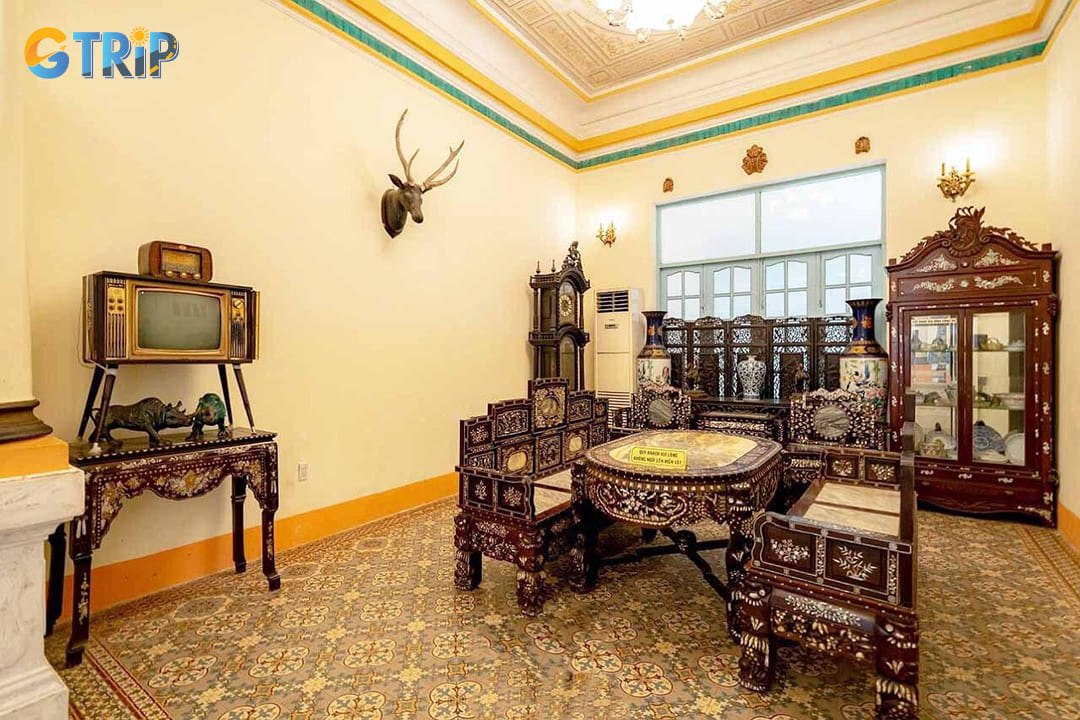
The living room was designed to accommodate high-class guests and reflect the Tran family’s upper-class lifestyle
The extravagant life of Tran Trinh Huy: The "Prince of Bac Lieu"
When discussing the lavish lifestyles of Vietnam's historical elite, few names evoke as much fascination as Tran Trinh Huy, better known as the “Prince of Bac Lieu”. Born into one of the wealthiest families in southern Vietnam during the early 20th century, he became a legendary figure renowned for his opulence, extravagance, and flamboyant lifestyle that rivaled even the colonial French aristocracy. His life was a dazzling spectacle of wealth, marked by high-stakes gambling, luxury automobiles, and extravagant parties that cemented his place in Vietnam’s cultural history.
Who was Tran Trinh Huy? A look into his early life and upbringing
Tran Trinh Huy was born in 1900 into the wealthy Tran family, who were among the largest landowners in Bac Lieu Province. His father, Tran Trinh Trach, was a powerful businessman who accumulated immense wealth through rice farming and land ownership, benefiting from the economic boom of French colonial Vietnam. Unlike many of his contemporaries, Huy received a Western-style education, studying in France, where he was exposed to the lavish lifestyles of European aristocrats. This international influence shaped his later indulgences and extravagant spending habits.
From a young age, Huy displayed a penchant for luxury and rebellion. While his father hoped he would continue managing the family’s business empire, he instead chose to embrace a life of pleasure and flamboyance. His return to Vietnam was marked by ostentatious displays of wealth, setting him apart from the more traditional Vietnamese elite.
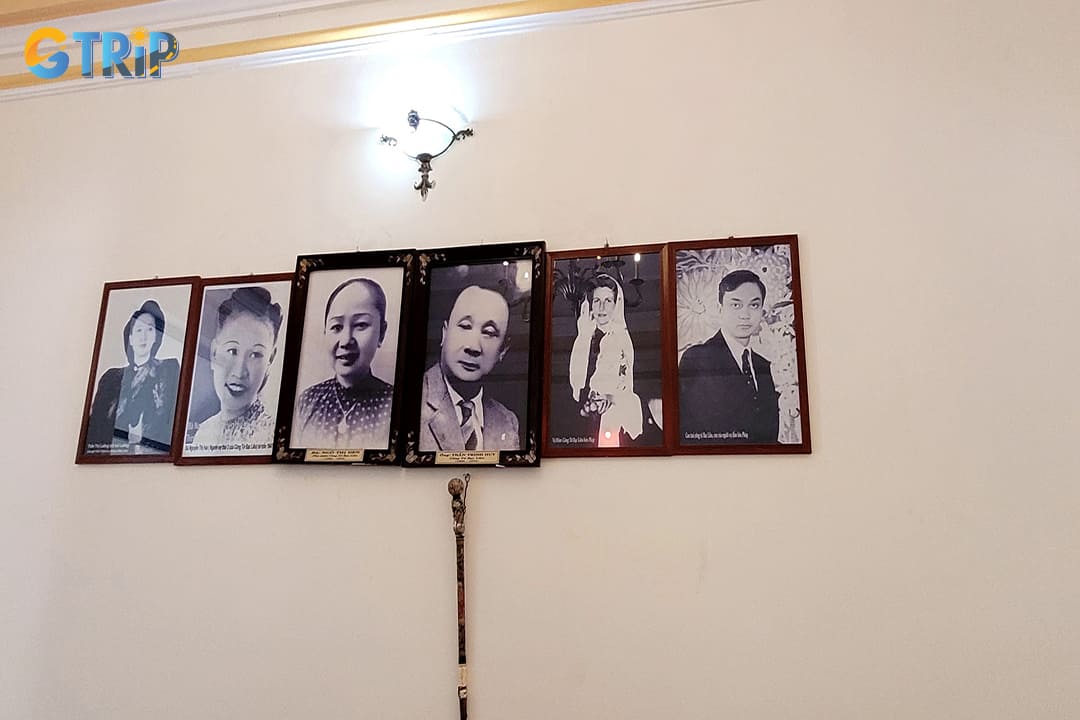
The portrait of Tran Trinh Huy is in the middle
Stories of wealth and excess: Gambling, cars, and lavish parties
Tran Trinh Huy’s lifestyle was nothing short of legendary. He was among the first people in Vietnam to own a private airplane, which he famously used for casual trips around the Mekong Delta, shocking onlookers who had never seen such extravagance. His collection of luxury cars included models imported from France, Britain, and the United States, which he would parade through the streets of Bac Lieu and Saigon.
His reputation as a gambler was equally notorious. Huy was known for placing enormous bets at casinos, sometimes wagering the equivalent of an entire village’s yearly income in a single night. These gambling escapades took him from Saigon to Hong Kong and even to the casinos of France, where he spent lavishly in the company of wealthy foreigners.
One of the most famous stories about Huy is his legendary challenge to other wealthy elites at a grand ball in Saigon. To prove his status as the richest and most extravagant playboy, he burned money - specifically, banknotes equivalent to a common man's annual salary - to light his cigarette. This act became a defining anecdote of his recklessness and his absolute disregard for the value of money.
His extravagant parties were the talk of southern Vietnam. Hosted in his opulent mansion, these gatherings featured imported French wines, gourmet cuisine, and live performances by artists from France and China. While many envied his fortune, others saw him as a symbol of decadence, a stark contrast to the struggles of ordinary Vietnamese people under colonial rule.
How did Tran Trinh Huy lose his fortune?
Despite his vast wealth, Huy’s lifestyle was unsustainable. As the economic landscape of Vietnam changed, his reckless spending and poor financial management gradually depleted the family fortune. The shift in political power following Vietnam’s independence also played a role, as the extravagant lifestyles of the colonial-era elites were no longer tolerated. The wealth he had inherited was lost due to excessive gambling, failed business ventures, and government land reforms that redistributed land to farmers.
By the time he was an old man, Tran Trinh Huy had become a shadow of his former self. No longer the dazzling playboy, he lived in relative obscurity, relying on the remnants of his once-vast fortune. His story became a cautionary tale about the fleeting nature of wealth and the dangers of unchecked extravagance.
Today, Tran Trinh Huy remains one of the most infamous figures in Vietnamese history. His former mansion, now the Cong Tu Bac Lieu House, has been preserved as a museum showcasing the lavish lifestyle of early 20th-century Vietnamese elites. His name continues to be associated with wealth and excess, often used in Vietnamese idioms and folk stories. Tourists visiting Bac Lieu can step inside his luxurious residence and see firsthand the opulence that once defined his life.

Cong Tu Bac Lieu House has been preserved as a museum showcasing the lavish lifestyle of early 20th-century Vietnamese elites
Ticket prices and opening hours
- Opening hours: 06:30 AM - 06:30 PM daily.
- Ticket prices (including tour guide):
- Adults: 45,000 VND
- Children: 20,000 VND
What to see inside the house of the prince of Bac Lieu?
Entering the House of the Prince of Bac Lieu is like traveling back in time to the lavish days of the Vietnamese upper class in the early 20th century. This historic mansion, with its magnificent French colonial architecture, showcases the lavish lifestyle once reserved for the wealthiest class. Every room, artifact, and architectural detail tells a story of luxury, sophistication, and cultural exchange. The mansion consists of 21 rooms, each with a specific function, from private bedrooms to large entertainment spaces.
1. Master bedroom: A display of unparalleled luxury
- This bedroom belongs to Tran Trinh Huy and is the centerpiece of the home.
- The European wooden bed, decorated with intricate carvings, remains the highlight.
- The antique wardrobe that once held clothing and accessories with intricate carvings reflects the aristocratic aesthetic taste.
- A classic dressing table that the Bac Lieu prince often groomed himself before leaving the room.
2. Dining room: A space for prestigious family meals
- A large mahogany dining table dominates the space, surrounded by high-backed chairs.
- Imported porcelain plates, silverware, and glassware are still on display, indicating the elaborate meals that were once served here.
- A chandelier, brought from France in the early 1900s, illuminates the room with a golden light, adding to the lavish atmosphere.
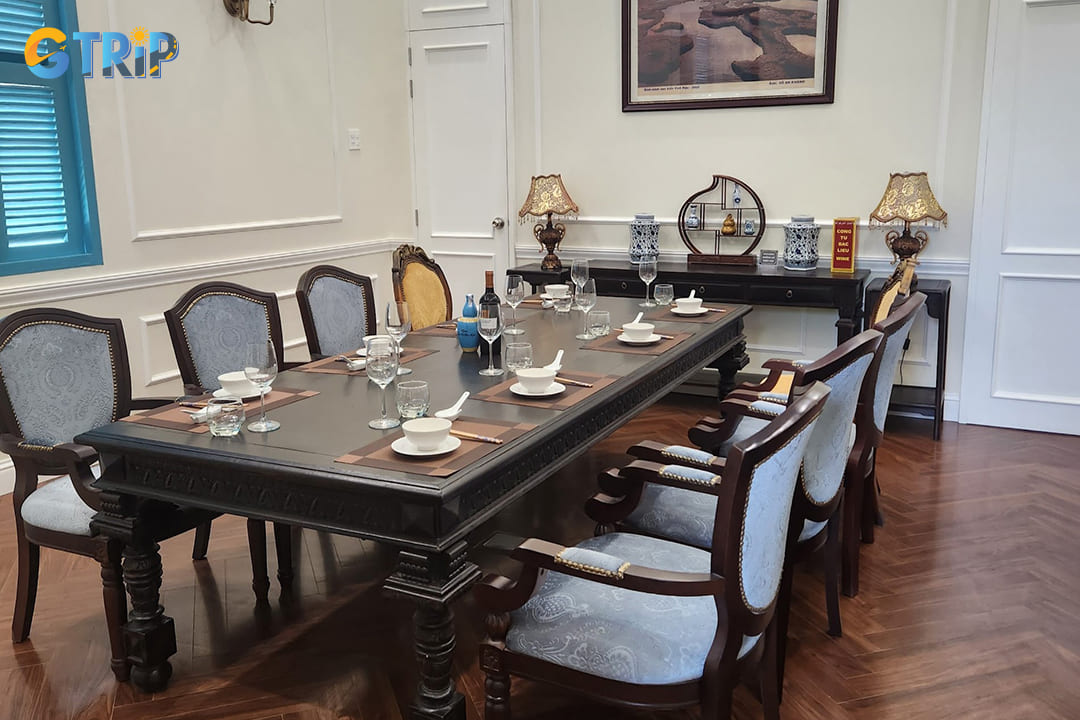
Imported porcelain plates, silverware, and glassware are still on display
3. Living room: Comfort suitable for the nobility
- These rooms were reserved for the distinguished guests and business partners of the Tran family.
- Equipped with a bed for guests to smoke opium and handcrafted wooden cabinets, they demonstrate high standards of hospitality.
- The antique TV
- The five-mountain sofa set
- The Akai music player that only noble families at that time could own
- The altar in the house of the Bac Lieu Prince is quite large and solemn.
- The round table set of fish transforming into dragons is elaborately carved
- Photo of Tran Trinh Huy's family and ancient paintings hanging on the wall.
4. A luxury car of the past
The villa displaying the antique car is a classic Citroën, a car brand favored by the richest people in Vietnam at that time. It is associated with the story of Mr. Tran Trinh Trach carrying a bag of money to buy a car to bring his son back to the country.
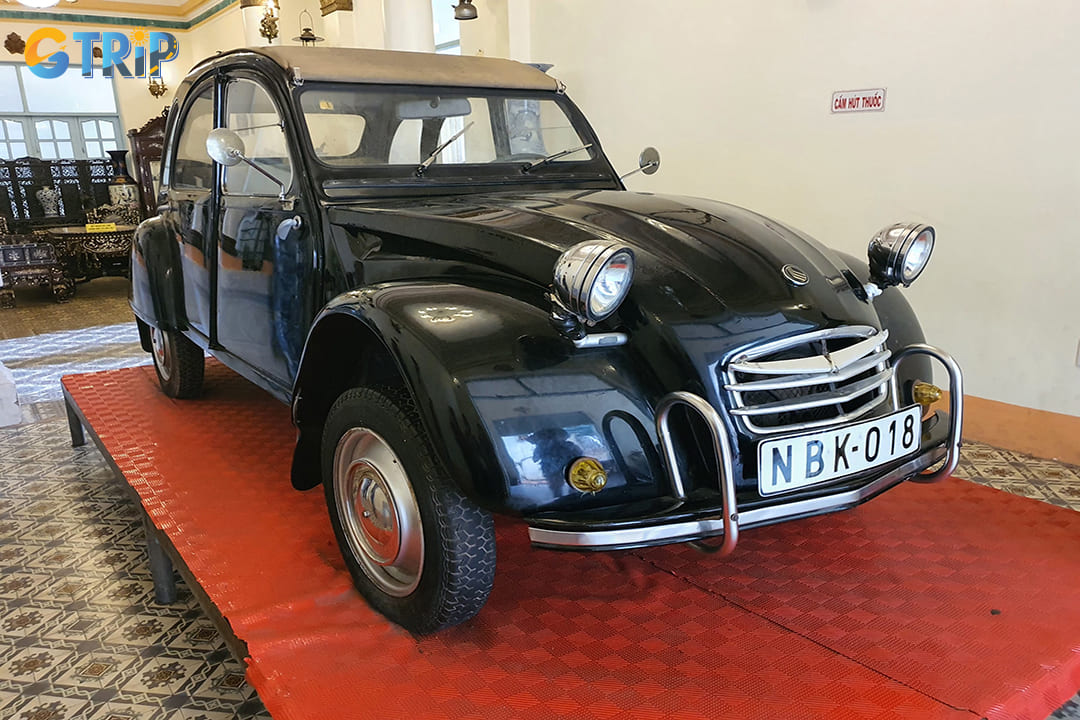
A classic Citroën was a car brand favored by the richest people in Vietnam at that time
How to get to Cong Tu Bac Lieu House?
Cong Tu Bac Lieu House is located at No. 13, Dien Bien Phu Street, Ward 3, Bac Lieu City, Bac Lieu Province. You can reach the house by various means, depending on their starting location.
From Ho Chi Minh City to Bac Lieu
- By bus
- Several bus companies operate daily routes from Ho Chi Minh City to Bac Lieu, including Phuong Trang.
- The journey takes around 5 - 6 hours.
- Buses depart from Mien Tay Bus Station and arrive at Bac Lieu Bus Station.
- By car or motorbike
- The distance from Ho Chi Minh City to Bac Lieu is about 280 km.
- The route follows National Highway 1A, passing through Long An, Tien Giang, Vinh Long, Can Tho, and Soc Trang before reaching Bac Lieu.
- The drive takes around 5 - 6 hours, depending on traffic.
From Can Tho to Bac Lieu
- By bus
- Can Tho is about 120 km from Bac Lieu.
- Several bus operators provide direct routes, and the journey takes around 2 - 3 hours.
- By car or motorbike
- Travelers can take National Highway 1A southward toward Soc Trang and then continue to Bac Lieu.
- The drive takes approximately 2.5 - 3 hours.
From Bac Lieu bus station to Cong Tu Bac Lieu House
- Taxi or motorbike taxi: The house is about 2 - 3 km from Bac Lieu Bus Station, making a taxi or motorbike taxi a quick and convenient option.
- Walking: If you enjoy walking, the site is accessible within 15 - 20 minutes on foot from the city center.
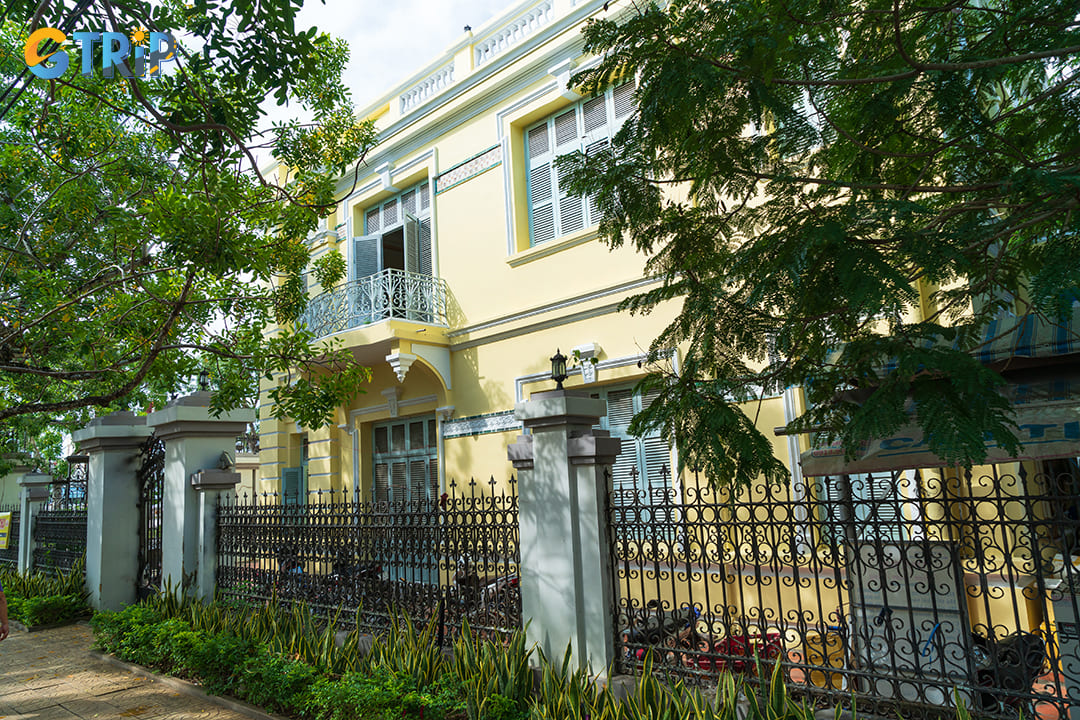
You can reach the house by various means, depending on their starting location
Nearby attractions to visit in Bac Lieu
Here are some nearby attractions that you can visit when you finish visiting Cong Tu Bac Lieu’s House.
Bac Lieu Museum (450 m)
Located at 25 Hai Ba Trung, Ward 3, Bac Lieu, the Bac Lieu Museum is a must-visit attraction for those interested in the region’s rich cultural and historical heritage. Housed in a beautifully preserved French colonial building, the museum offers tourists an in-depth look at the province’s history, from its early days to the present. Exhibits cover various aspects of Bac Lieu’s past, including the lives of its diverse ethnic communities, Kinh, Khmer, Hoa, and Cham, who have shaped the region’s identity.
The museum also showcases artifacts related to agriculture, fishing, and trade, which have long been the backbone of the local economy. Additionally, you can learn about the province’s role in Vietnam’s resistance movements, with displays featuring wartime relics and historical documents. With its well-curated collections and informative displays, the Bac Lieu Museum provides an excellent opportunity to understand the province’s cultural and historical significance.
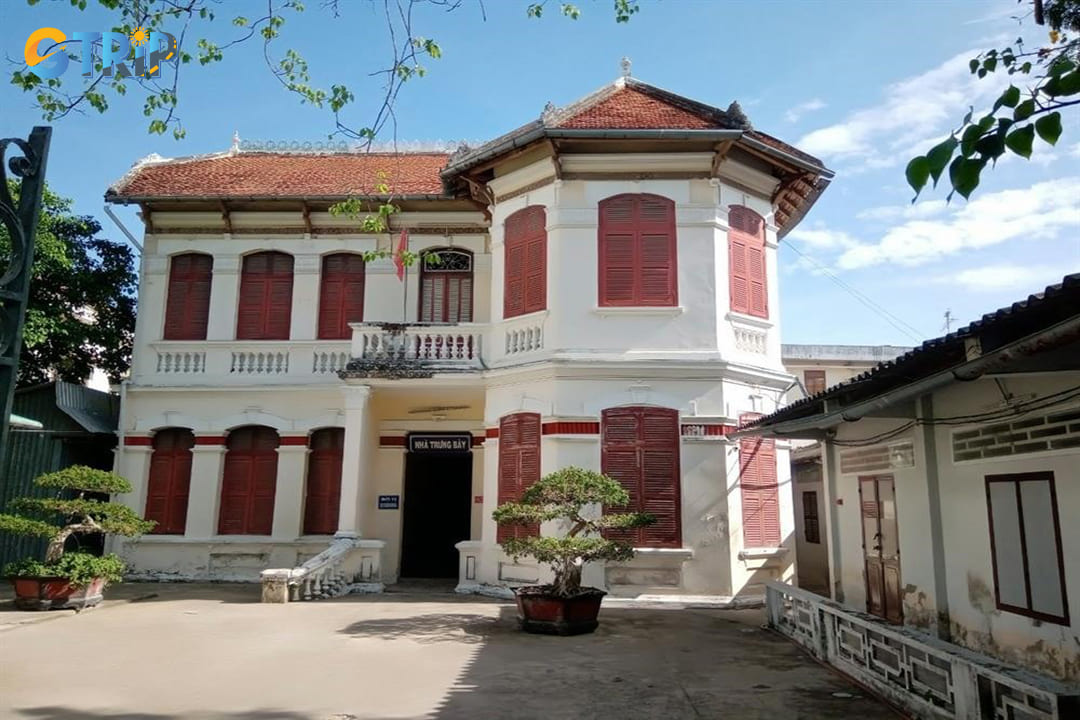
The Bac Lieu Museum is a must-visit attraction for those interested in the region’s rich cultural and historical heritage
Cao Van Lau Musician Memorial Area (1.2 km)
It is a memorial site dedicated to Cao Van Lau, the renowned composer of Vietnam’s famous cai luong song "Da Co Hoai Lang". This site is an important cultural landmark honoring his contributions to traditional Vietnamese music. You can learn about his life, see artifacts related to his work, and experience the rich heritage of cải lương in the Mekong Delta. The memorial complex features a well-designed exhibition space with historical documents, images, and personal memorabilia of the composer. Additionally, you can enjoy live performances of cai luong music, immersing yourself in the soulful melodies that define the region’s artistic identity. The site is a tribute to Cao Van Lau and also an educational destination where travelers can gain a deeper appreciation of Vietnam’s traditional performing arts.
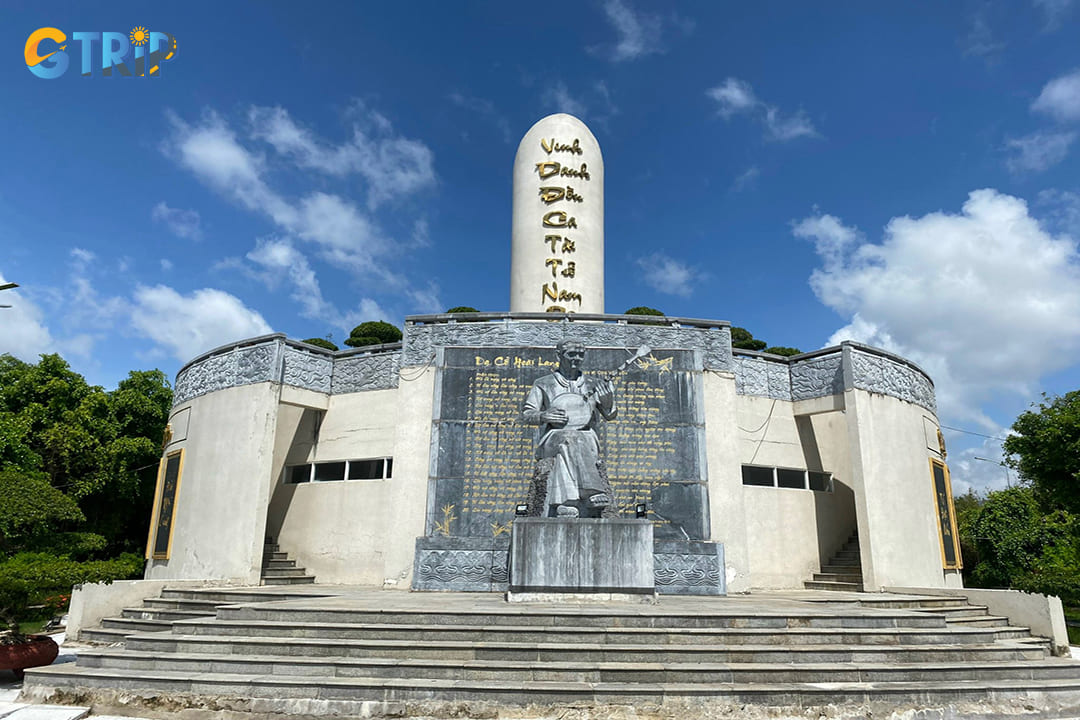
It is a memorial site dedicated to Cao Van Lau, the renowned composer of Vietnam’s famous cai luong song "Da Co Hoai Lang"
Bac Lieu Bird Sanctuary (6.1 km)
The Bac Lieu Bird Sanctuary is located in Nha Mat Ward, Bac Lieu City, Bac Lieu Province, approximately 5 kilometers from the town center. It is a remnant of a once vast coastal forest. Covering around 107 hectares within a 385-hectare forest area, it stands as one of the largest bird colonies in the Mekong Delta. The sanctuary is home to 46 bird species, including a significant population of white herons. Bird populations peak during the rainy season, offering a spectacular sight for bird enthusiasts. Beyond birds, the area also hosts 60 fish species, seven frog species, ten mammal species, and eight reptile species, contributing to a rich and diverse ecosystem. The sanctuary's vegetation includes small areas of mangrove forests, providing essential habitats for various species and supporting the region's ecological balance.
You can immerse yourself in the tranquil environment, observing a multitude of bird species in their natural habitat, especially during the breeding season. The lush greenery and serene ambiance make it an ideal spot for nature lovers and photographers.

Covering around 107 hectares within a 385-hectare forest area, this sanctuary stands as one of the largest bird colonies in the Mekong Delta
Where to stay and what to eat near Prince Bac Lieu House?
When visiting Bac Lieu House, choosing the right accommodation and exploring the local cuisine are essential parts of the experience. Here’s a detailed guide to help you enjoy your trip to the fullest.
Best hotels near Cong Tu Bac Lieu House
- Saigon Bac Lieu Hotel: 02-04-06 Hoang Van Thu, Ward 3, Bac Lieu City. Features modern rooms, a restaurant, and conference rooms. Prices range from 700,000 VND/night.
- Tran Vinh Hotel: 85-87 Hai Ba Trung, Ward 3, Bac Lieu City. Offers spacious rooms, a central location, and good service. Prices range from 600,000 VND/night.
- Happy House Motel: Ward 1, Bac Lieu City. A budget-friendly stay with rooms suitable for backpackers and short-term tourists. Prices range from 300,000 VND/night.
These hotels are all within 1 - 2 km from Bac Lieu House, making it easy for you to explore the area.
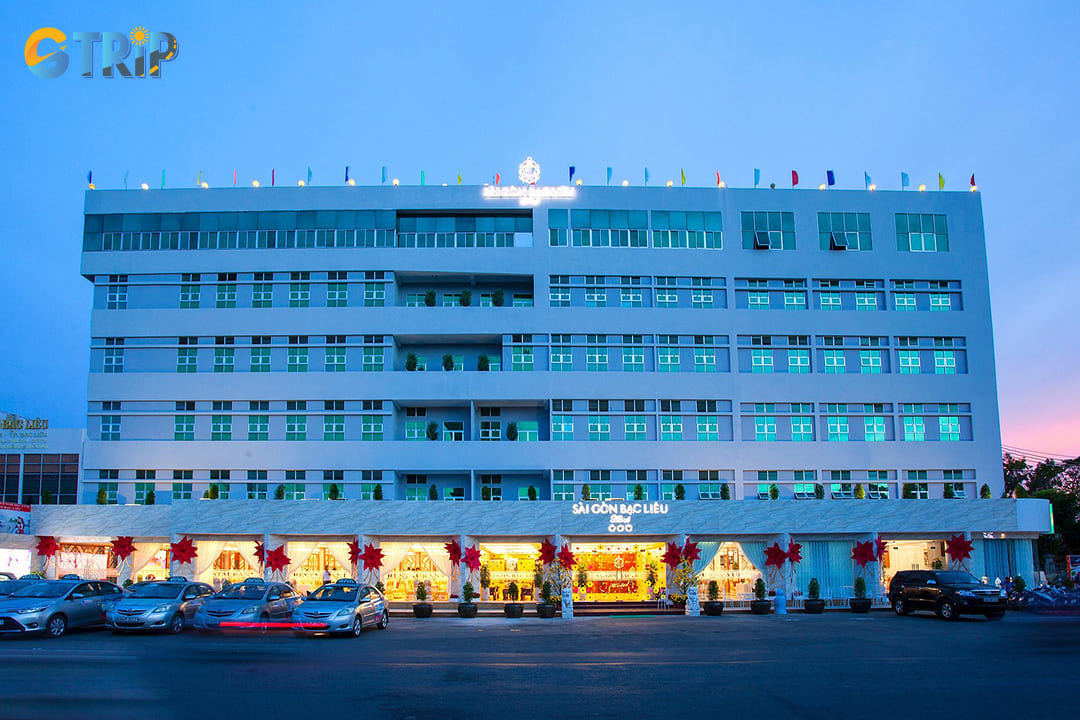
Saigon Bac Lieu Hotel is one of the best nearby hotels
Local cuisine: Must-try Bac Lieu dishes
Bac Lieu is famous for its diverse and flavorful cuisine. Here are some must-try dishes:
- Bun mam (fermented fish noodle soup): A flavorful broth made from fish, served with rice noodles, fish, shrimp, and fresh herbs.
- Banh xeo (Vietnamese sizzling pancake): A crispy pancake filled with shrimp, pork and bean sprouts, served with fresh vegetables and dipping sauce.
- Ba khia salted crab (salted three-strip crab): A local crab prepared in various styles, such as salad or tamarind stir-fry.
- Coconut silk cake (silkworm noodles with coconut sauce): Soft silkworm-shaped noodles served with shredded pork, pickles, and creamy coconut sauce.
- Lau mam (fermented fish hotpot): A unique hotpot with a rich broth made from fermented fish, combined with seafood and local vegetables.
To enjoy these specialties, you can visit the following restaurants:
- Noodles Nam Hon: 649 Tran Phu, Ward 7, Bac Lieu City.
- Banh xeo A Mat: Road Giong Nhan, Hiep Thanh, Bac Lieu city.
- Hong Gam Hotpot: Provincial road 38/3/225B Nguyen Thi Minh Khai, Ward 5, Bac Lieu City.
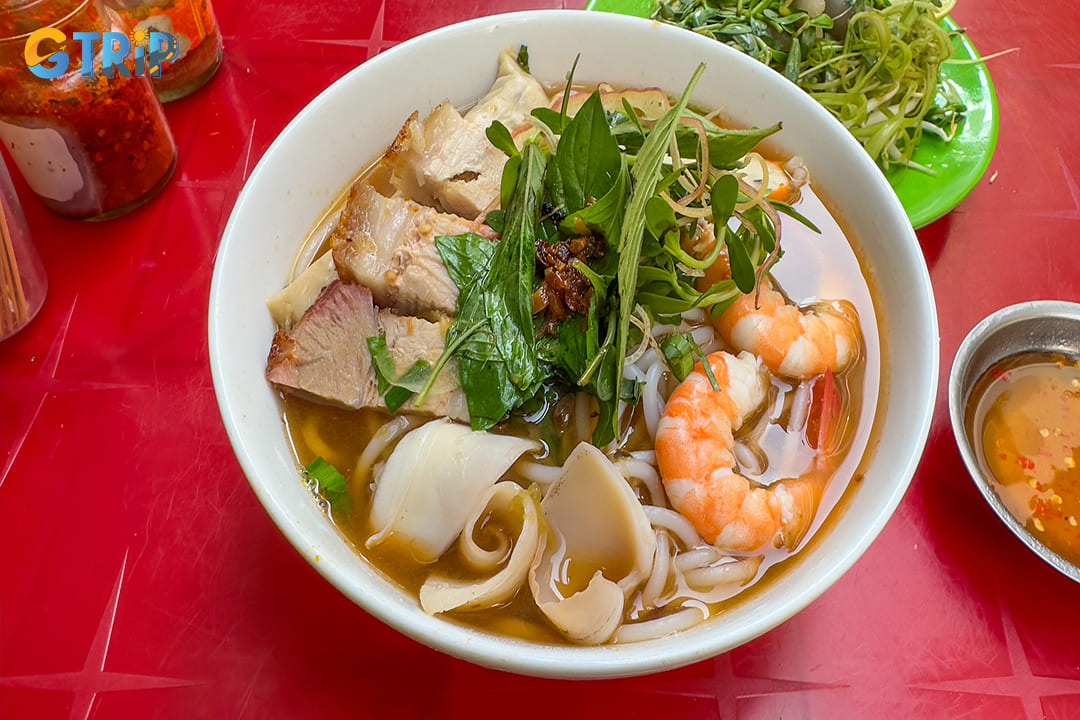
You should try bun mam when visiting Bac Lieu
Cong Tu Bac Lieu House stands as a living testament to Vietnam’s opulent past, blending French colonial elegance with the storied life of Tran Trinh Huy. This house offers a fascinating glimpse into the lavish lifestyles of the early 20th-century elite. For travelers exploring Bac Lieu, this landmark is more than just a historical site - it’s an experience.
Want to uncover more of Vietnam’s rich heritage? Our carefully crafted Vietnam tour packages take you through the country’s most captivating historical sites, including hidden gems beyond the usual tourist trails. Whether you’re drawn to the grandeur of the past or the natural beauty of Vietnam, GTrip has the perfect itinerary for you.
Dive into our curated guides on historical landmarks and must-visit destinations across the country!

